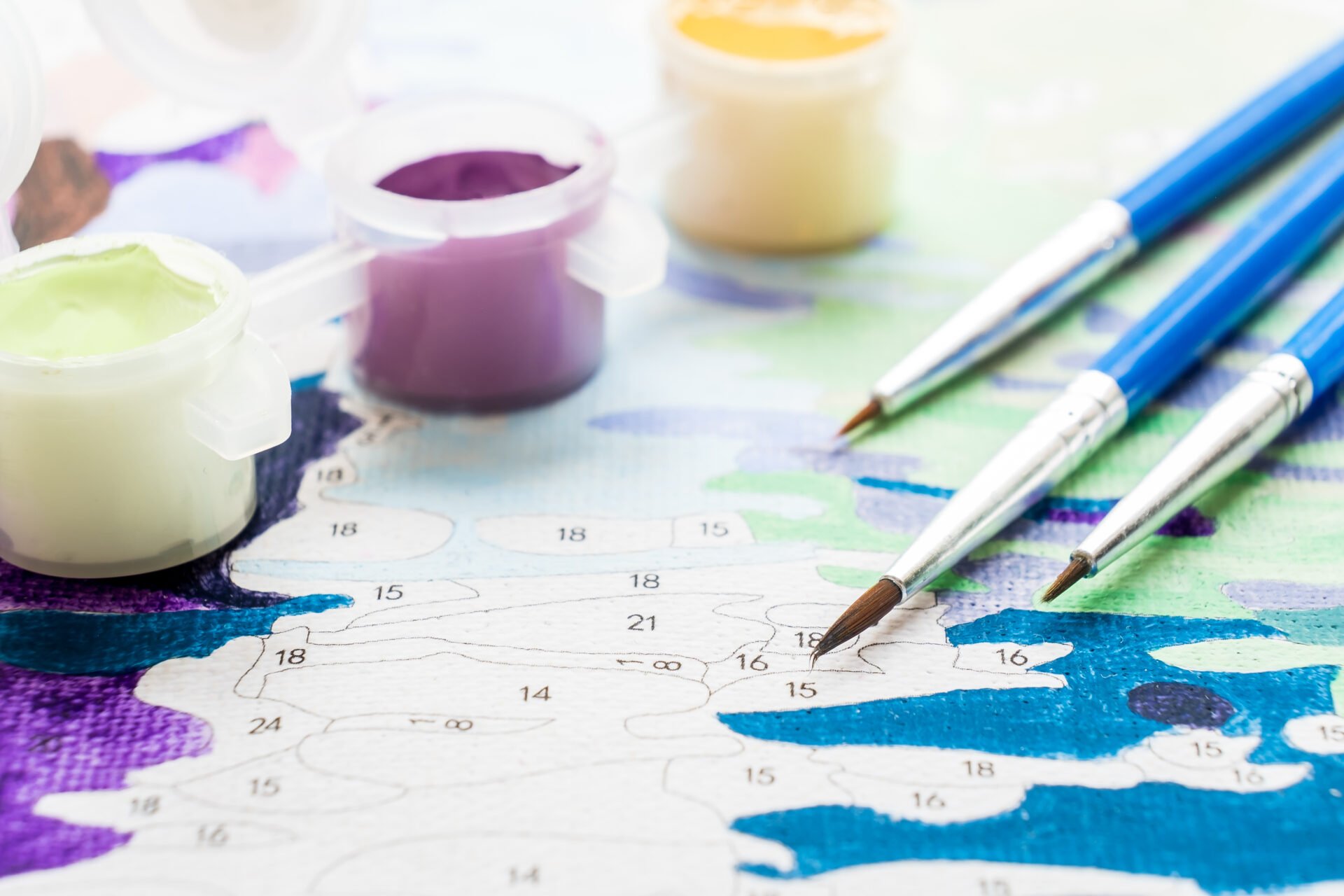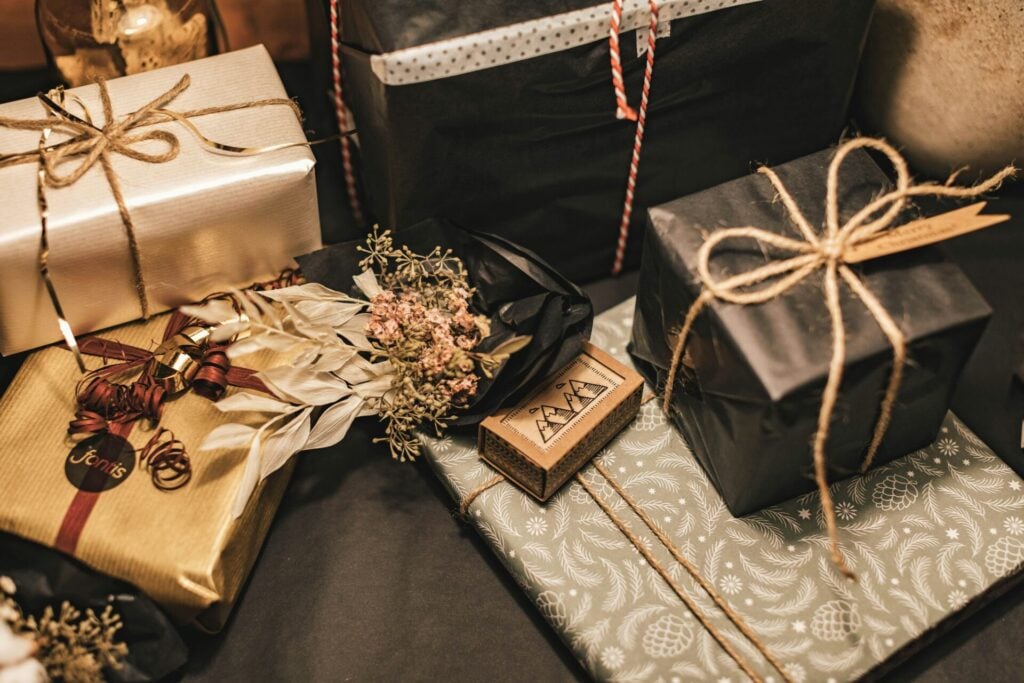Picking up a new hobby is exciting, but it can also feel a little overwhelming. There’s that moment of staring at a blank page, a lump of clay, or a fresh canvas and wondering where to even begin. With painting, the challenge can feel even sharper…brushes, colours, and techniques all seem to demand some insider knowledge.
That’s where paint by numbers comes in. It takes away the fear of starting from scratch and gives beginners a gentle structure to follow, while still leaving plenty of room to learn as you go. As you fill in each section, you begin to notice how colours blend, how different brushes behave, and how layers build up a picture. It’s simple and approachable, but it also teaches skills that build confidence and carry over into more creative projects down the line.
Beyond filling in the blanks, paint by numbers builds a surprising foundation for first-time artists. These six skills are the ones you’ll carry with you into any future creative project
Basic brush control techniques
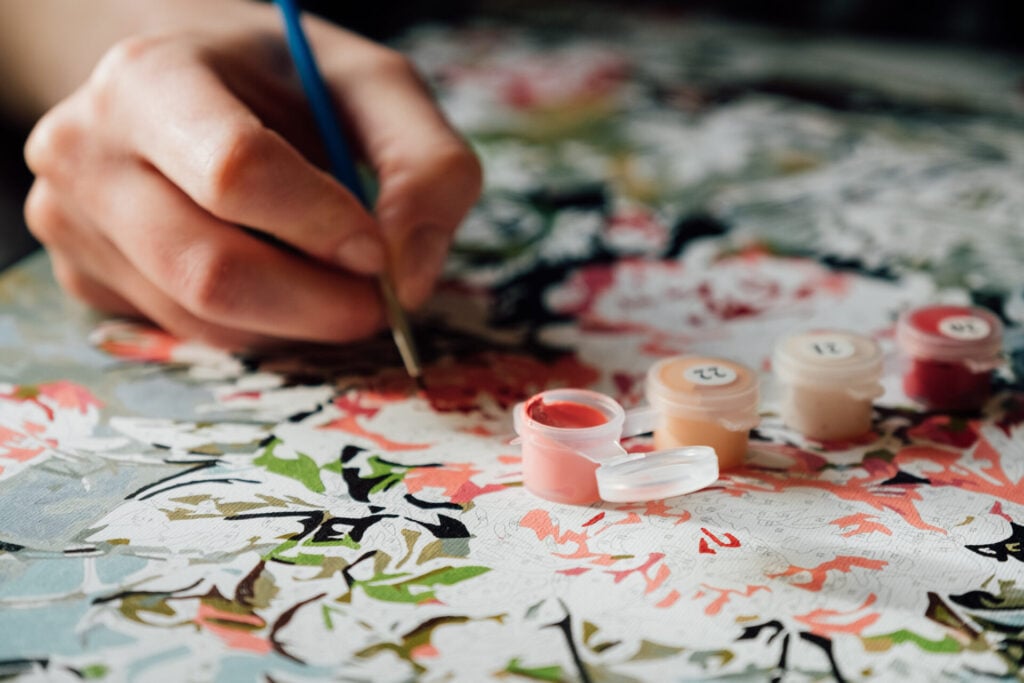
Brush control is one of the first things beginners pick up with paint by numbers. Following the outlines helps you steady your hand and focus, and before long you’ll notice your strokes getting cleaner and more confident.
You’ll also get used to switching brushes depending on the space you’re working on – tiny ones for fiddly details, bigger ones to sweep across larger areas. It’s a bit like swapping tools in a kitchen: once you know which brush does what, the whole process feels smoother.
Along the way, you naturally start trying out simple techniques. Flat strokes give you even coverage, while light feathering softens the edges. It’s surprisingly satisfying to see how small changes in movement can completely shift the look of your painting.
Projects such as Figured’Art’s painting by numbers project for adults on canvas provide a structured way to repeat these techniques. As a result, painters develop habits that carry over into future art projects.
Colour recognition and matching
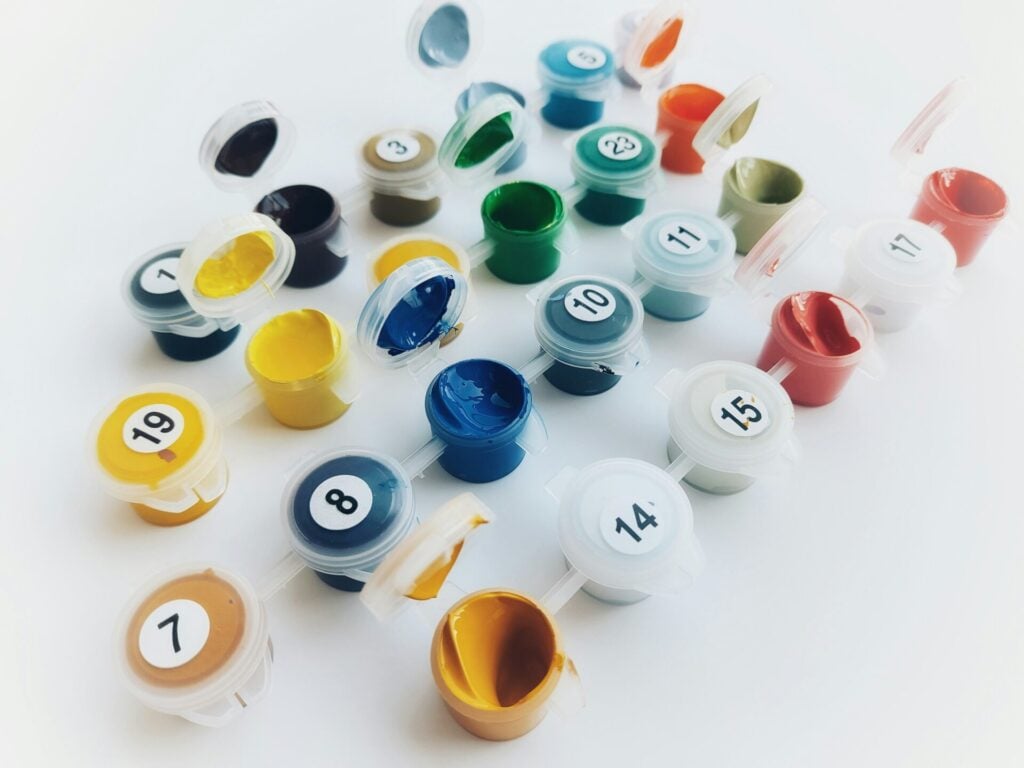
One of the first lessons paint by numbers teaches is how to really see colour. Instead of thinking of something as simply ‘blue’ or ‘green,’ you start to notice the subtle shifts, the difference between a cool sky blue that brightens a scene and a deeper navy that adds shadow and depth.
Matching each numbered section to a shade gently trains your eye to pick up on contrast and variation, and over time it becomes second nature. The more you switch between paints, the more you begin to appreciate how similar tones can create completely different moods on the canvas.
It’s not just a visual exercise either. The repetition helps with memory, making it easier to recall shades later — a skill that comes in handy when you move on from guided projects to mixing your own colours. What starts as simply filling in the blanks soon becomes a quiet education in how colours interact, and how to use them with more confidence in any painting you attempt.
Understanding paint layering and shading
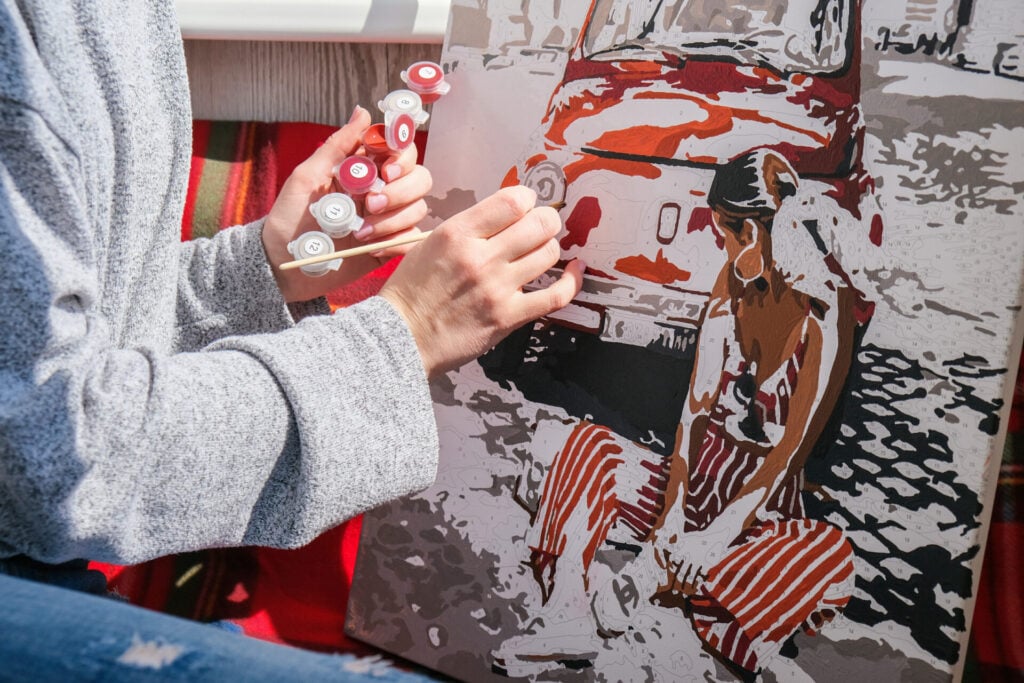
Paint by numbers also gives beginners their first taste of layering, showing how extra coats of paint can turn a flat patch of colour into something richer and more alive. It’s a simple process, but it builds patience and teaches the value of slowing down rather than rushing through the canvas.
Shading starts to make sense too. Filling in the lighter and darker areas side by side shows how highlights lift a picture while shadows create depth, suddenly the image feels less flat, more three-dimensional.
These layers also help with brush control. You quickly learn how much paint to load, how much pressure to use, and how to soften edges for a smoother blend. Little by little, those small adjustments shift you from just filling in the blanks to making more thoughtful choices about how your painting looks.
It’s an early glimpse into the techniques artists use every day, and it gives first-time painters the confidence to move from structured projects into more creative work of their own.
Patience and focus development
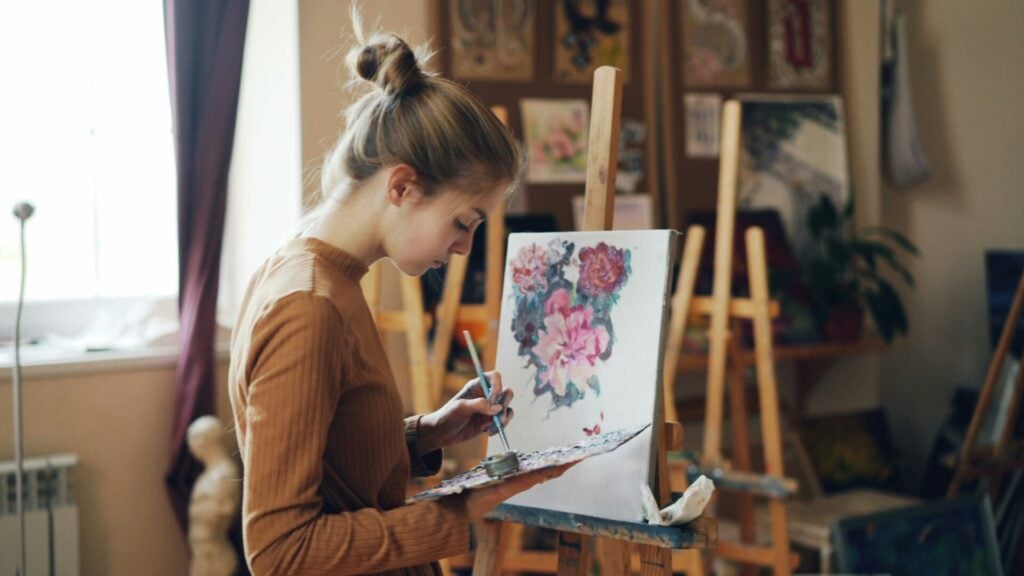
Paint by numbers requires steady attention to detail. Each section of the canvas must be matched with the right colour, which pushes a painter to slow down and stay alert. This steady pace helps reduce rushing and encourages a calm, step-by-step approach.
The process also trains the mind to block out distractions. A painter must keep their eyes on the small spaces and stay consistent with each brushstroke. As a result, they practice holding focus for longer periods of time.
Patience grows naturally through repetition. Some areas take longer to complete, and progress may feel slow. However, finishing even one small section can give a sense of achievement that motivates the painter to continue.
Over time, this habit of steady effort can carry into other tasks. The ability to concentrate on a single activity without losing interest becomes stronger, which supports learning and problem-solving in daily life.
Learning to follow visual guides
Paint by numbers introduces new painters to the process of working with step-by-step instructions. Each section of the canvas shows a clear outline and number, which directs the painter to the correct colour. This structure helps beginners stay organized and avoid confusion.
By following the guide, painters learn to focus on details instead of guessing where to place colours. They practice patience as they move from one small area to the next, which builds concentration. This steady approach can make the painting process less overwhelming.
The numbered sections also teach painters how to break a larger picture into smaller, manageable tasks. As a result, they begin to understand how individual parts create a complete image. This skill can later help them approach more complex projects with confidence.
In addition, the habit of reading and applying visual cues strengthens attention to accuracy. Over time, this practice supports better control and precision in their work.
Introduction to colour blending

Colour blending introduces beginners to the idea of making smooth shifts between shades instead of leaving sharp edges. It helps a painting look more natural and less like a set of separate blocks. This step can add depth and a softer finish to even the simplest design.
At first, blending may feel optional, but it quickly shows its value as skills grow. By mixing two colours at the edge of a section, painters can create a gentle transition that feels more realistic. This makes the artwork look more polished and balanced.
Different methods can achieve this effect. Some painters use a wet approach by working two colours together before they dry. Others layer thin coats of paint to build a gradual change. Both methods give the painter more control over the final look.
Practicing blending also teaches patience and brush control. It encourages careful attention to detail and helps a beginner understand how colours interact on the canvas. Over time, this skill supports more creative choices in future projects.
Paint by numbers gives beginners a simple way to practice brush control and colour use without pressure. It helps them understand how paint behaves and how colours work together.
The process also builds patience and attention to detail, which are useful in any creative activity. In addition, it can boost confidence by letting new painters finish a piece that looks complete.
Although it does not cover advanced skills, it creates a foundation that makes future learning easier. For many, it acts as a first step toward more independent painting.

